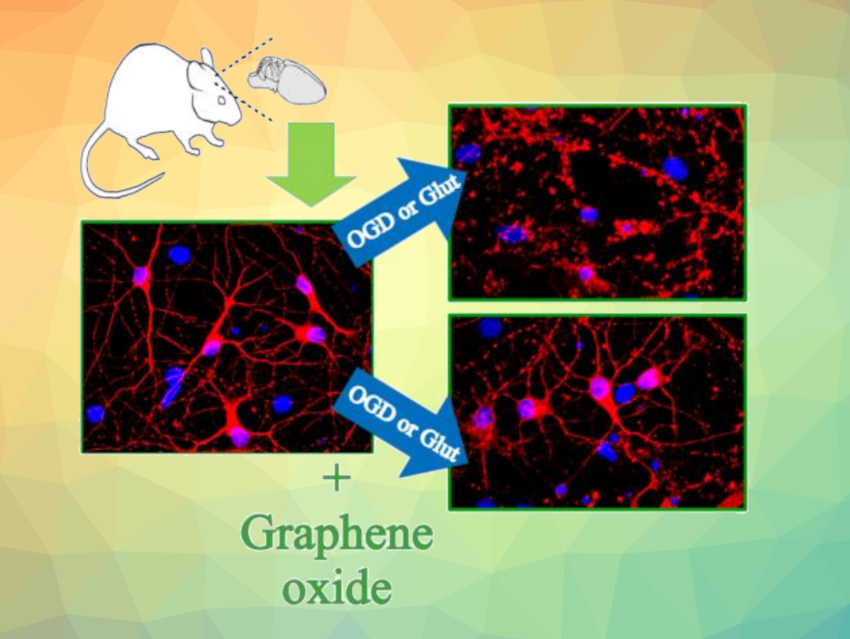In medical conditions such as ischemic strokes (caused by a blood clot) or neurodegenerative disorders, excitotoxicity can play a role. This is a condition where oxygen-glucose deprivation (OGD) in the brain disrupts the energy supply of cells and causes a release of excessive amounts of glutamate. The resulting glutamate levels cause over-activation of excitatory synapses and can lead to neuroinflammation and cell death. Small graphene oxide nanosheets (s-GO) with lateral sizes of less than 500 nm can downregulate excitatory synapses, which could be useful in preventing excitotoxicity.
Giada Cellot, Laura Ballerini, International School for Advanced Studies (SISSA), Trieste, Italy, and colleagues have investigated the effect of s-GO treatments on excitotoxicity using an in vitro model of ischemic stroke. The team exposed cultures of nerve cells to oxygen-glucose deprivation for 1 h or directly to glutamate for 30 min. They then added s-GO afterward to mimic treatment after, e.g., a stroke.
In the cell cultures treated with s-GO, the team observed a reduction in the amounts of dying cells. The treatment with nanosheets protected the integrity of the neurons, potentially by directly downregulating the synaptic over-activation brought on by glutamate. Thus, s-GO might be useful for the development of alternative therapeutic strategies against excitotoxicity, but the researchers point out that further investigations will be needed to assess long-term effects and ensure the biocompatibility of the nanosheets.
- Graphene Oxide Nanosheets Hamper Glutamate Mediated Excitotoxicity and Protect Neuronal Survival In An In vitro Stroke Model,
Lorenza Tortella, Irene Santini, Neus Lozano, Kostas Kostarelos, Giada Cellot, Laura Ballerini,
Chem. Eur. J. 2023.
https://doi.org/10.1002/chem.202301762




